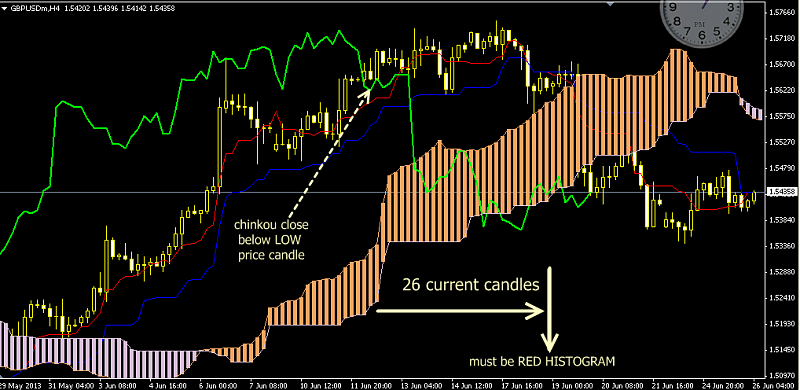3. Senkou Span A - 1st leading line
The average of the Tenkan Sen and Kijun Sen, plotted 26 days ahead.
(Tenkan Sen + Kijun Sen) / 2 plotted 26 days ahead
The Senkou Span A, also known as the 1st leading line, is a moving average of the Tenkan Sen and Kijun Sen and is plotted 26 trading days ahead, i.e. into the future. It is primarily used in combination with the Senkou Span B to form the Kumo (cloud), to indicate probable future support and resistance levels.
As price tends to respect prior support and resistance levels, time-shifting this line forward gives a visual representation of how the price on a date relates to support and resistance from 26 trading days prior.
The trend is deemed to be bearish when the Senkou Span A is below the Senkou Span B and bullish when it is above.


 12Likes
12Likes LinkBack URL
LinkBack URL About LinkBacks
About LinkBacks










 Reply With Quote
Reply With Quote





Bookmarks